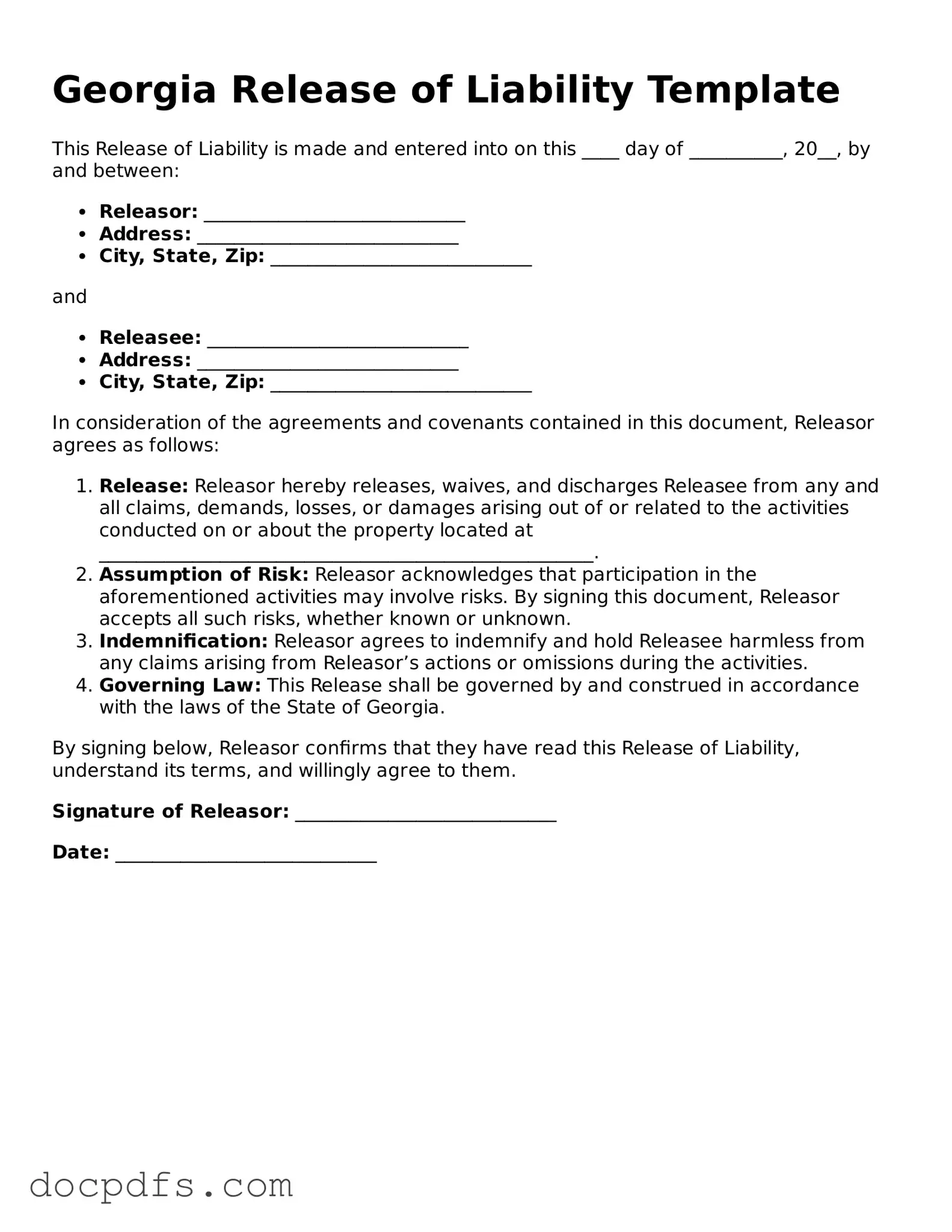The Georgia Release of Liability form is an important document that serves to protect individuals and organizations from potential legal claims arising from various activities. This form is commonly used in situations where there is a risk of injury or damage, such as recreational events, sports activities, or any other scenarios where participants might be exposed to hazards. By signing this form, participants acknowledge the risks involved and agree to release the organizers or providers from liability. It is crucial for both parties to understand that this form does not eliminate all responsibility but rather clarifies the extent of liability. The document typically includes essential details such as the names of the parties involved, a description of the activity, and a statement regarding the assumption of risk. Furthermore, it often requires the signature of the participant or a guardian if the participant is a minor, ensuring that consent is given willingly and with full awareness of the potential dangers. Overall, the Georgia Release of Liability form plays a significant role in fostering transparency and understanding between participants and organizers, ultimately contributing to a safer environment for all involved.
